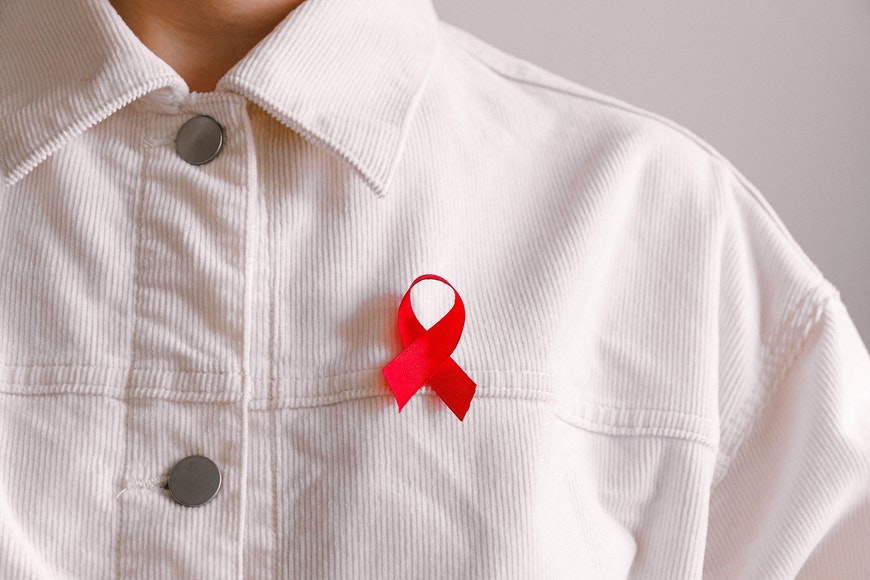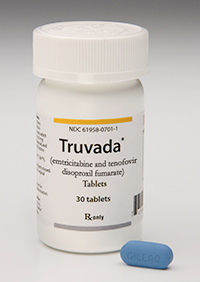
Overview
Acquired immunodeficiency syndrome (AIDS) is a chronic and potentially life-threatening condition which is caused by the human immunodeficiency virus (HIV). HIV interferes with your body’s ability to fight organisms that cause disease by damaging your immune system.
HIV is a sexually transmitted infection (STI). It may also be spread from mother to child during pregnancy, childbirth, or breast-feeding, and can also be spread by contact with infected blood. Without anti HIV medication it can take years before HIV weakens your immune system to the point where you get AIDS.
There is currently no cure for HIV/AIDS, but there are anti-HIV medications that can dramatically slow down the progression of the disease. These anti-HIV medications have reduced AIDS deaths worldwide.
Symptoms
Depending on the phase of infection, the symptoms of HIV and AIDS may vary.
Primary infection (Acute HIV)
When the HIV virus enters the body, most people will develop a flu-like illness within a month or two. This illness is called acute or primary HIV infection, and it can last for a few weeks. The signs and symptoms include:
- Headache
- Fever
- Rash
- Swollen lymph glands
- Sore throat and painful mouth sores
- Muscle aches and joint pain
These symptoms can be so mild that they go completely unnoticed. However, the amount of virus in your bloodstream is quite high during this phase. As a result, HIV spreads more easily in this stage than the next.
Clinical latent infection (Chronic HIV)
In some, persistent swelling of the lymph nodes occurs during this stage. Otherwise, there are no specific signs and symptoms. HIV remains in the body as well as in infected white blood cells.
This stage of the HIV infections usually lasts about 10 years if you are not using anti HIV medication. Sometimes, even with treatment, it can last for decades. Some people develop more severe disease much sooner.
Symptomatic HIV infection
As the virus multiplies and destroys your immune cells you might develop mild infections or chronic signs and symptoms like:
- Fatigue
- Diarrhea
- Swollen lymph nodes
- Fatigue
- Weight loss
- Shingles
- Weight loss
- Oral yeast infection
Progression to AIDS
Thanks to better anti HIV medication, most people today in the US with HIV don’t develop AIDS. If left untreated, HIV will usually develop into AIDS in around 10 years.
When AIDS occurs, your immune system has taken significant damage. You’re more likely to develop opportunistic infections or cancers – diseases that usually wouldn’t trouble someone with a healthy immune system.
The signs and symptoms of some of these infections may include:
- Recurring fever
- Persistent, unexplained fatigue
- Soaking night sweats
- Skin lumps or rashes
- Persistent white spots or unusual lesions in your mouth or on your tongue
- Chronic diarrhea
- Weight loss
Causes
HIV is caused by a virus. This virus can be spread through blood, sexual contact, or from mother to child during childbirth, breast-feeding, or pregnancy.
How does HIV become AIDS?
HIV destroys the CD4 T cells (these cells play a large role in helping your body fight disease). The fewer CD4 T cells you have, the weaker your immune system gets.
An HIV infection may be present for years before it turns into AIDS. AIDS is diagnosed when the CD4 T cell count falls under 200, or you have an AIDS-defining complication
How HIV doesn’t spread
HIV does not spread through ordinary contact. This means you can’t catch HIV or AIDS by kissing, shaking hands, dancing with, or hugging someone who has HIV. HIV is not spread through insect bites, air, water, or by sitting on a toilet.
Diagnosis
HIV is usually diagnosed by testing your saliva or blood for antibodies to the virus. It can, unfortunately, take up to 12 weeks for your body to develop these antibodies.
A quicker test looks for HIV antigen, a protein that is produced by the virus immediately after infection. This allows the individual to take swifter steps to prevent the spread of the virus to others.
Home testing
At least two FDA approved home tests for HIV are available. Depending on what you choose, you will either need a saliva sample or a drop of dried blood. If the test comes back positive you will still need to see the doctor to confirm the diagnosis and talk about treatment options. If the test is negative you should repeat it in a few months to verify the results.
Tests to stage disease and treatment
If you receive a positive HIV/AIDS diagnosis, there are several tests to help doctors determine the stage of disease and what will be the best treatment. These tests include:
- CD4 T cell count. CD4 T cells are white blood cells that specifically target and destroy HIV. Even if you are not experiencing symptoms, HIV infection will progress to AIDS when your CD4 T cell count dips below 200.
- Viral load (HIV RNA). This test will measure the amount of virus in your blood. A higher viral load has been linked to a worse outcome.
- Drug resistance. There are strains of HIV that are resistant to medications. This test helps your doctor to determine if your specific form of HIV is resistant to any medications and helps guide treatment decisions.
Tests for complications
Your doctor will also order lab tests in order to check for other complications or infections which include:
- Tuberculosis
- Hepatitis
- Toxoplasmosis
- Sexually transmitted infections
- Liver or kidney damage
- Urinary tract infection
Treatment

There is no cure for HIV/AIDS, but many different anti HIV medications are available to control the virus. Such treatment is called ART which stands for antiretroviral therapy. Each class of drug has a different way of blocking the virus. ART is recommended to everyone, regardless of CD4 T cell counts. It’s recommended to combine three medications from two different classes. This help to avoid creating drug-resistant strains of HIV.
The classes of anti-HIV drugs include:
- Non-nucleoside reverse transcriptase inhibitors (NNRTIs) “turn off” a protein that is required by HIV to make copies of itself. Some of these anti HIV medications include: Viramune (nevirapine), Sustiva (efavirenz), and Intelence (etravirine).
- Protease inhibitors (PIs) inactivate the HIV protease which is another protein HIV needs to copy itself. Some examples are: Prezista (darunavir), Crixivan (indinavir), Reyataz (atazanavir), and Lexiva (fosamprenavir).
- Nucleoside or nucleotide reverse transcriptase inhibitors (NRTIs) are faulty versions of the components that HIV needs to copy itself. Examples of these anti HIV medications are: Truvada (emtricitabine/tenofovir), Ziagen (abacavir), Combivir (lamivudine-zidovudine), and Descovy (tenofovir alafenamide/emtricitabine).
- Integrase inhibitors work to disable a protein called integrase. Integrase is used by HIV to insert its genetic materials into CD4 T cells. Examples are: Tivicay (dolutegravir), and Insentress (raltegravir).
- Entry or fusion inhibitors block the entry of HIV’s entry into CD4 T cells. Some examples of these anti HIV medications are Selzentry (maraviroc), and Fuzeon (enfuvirtide).


